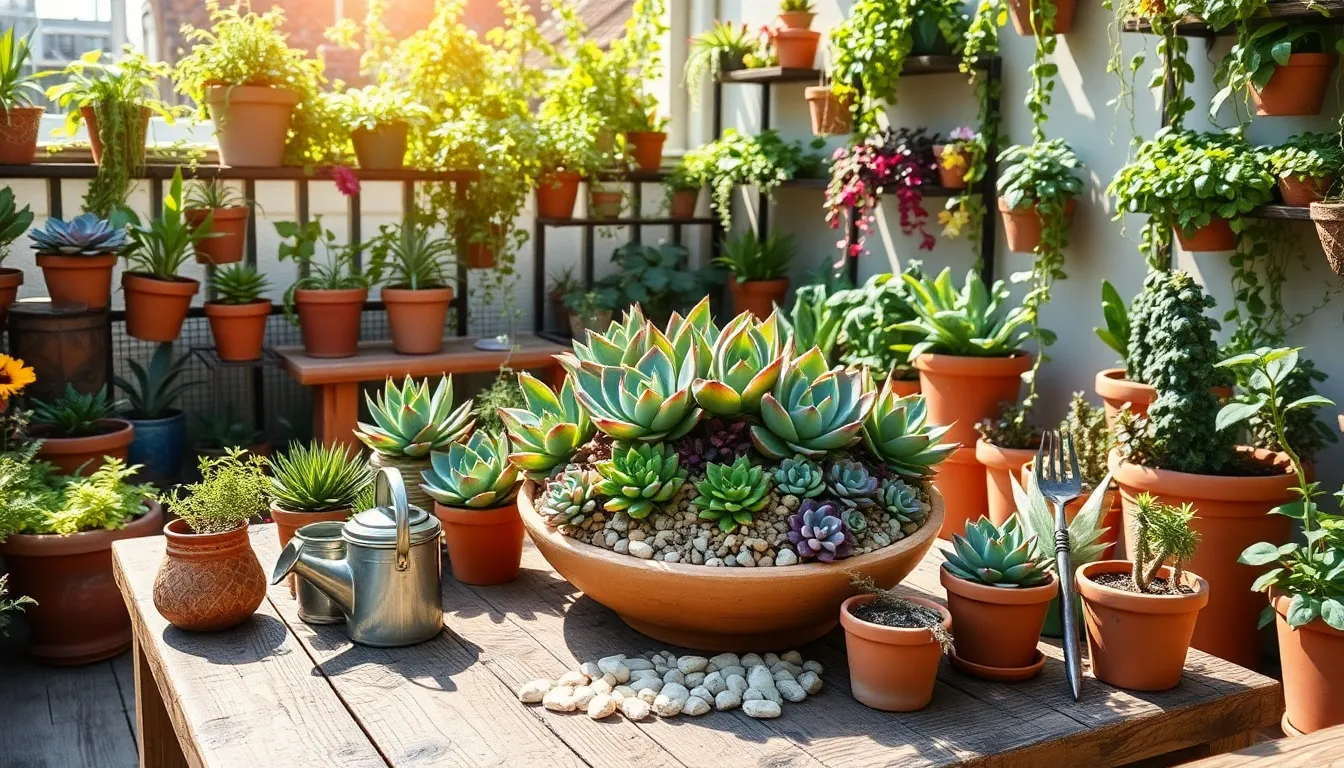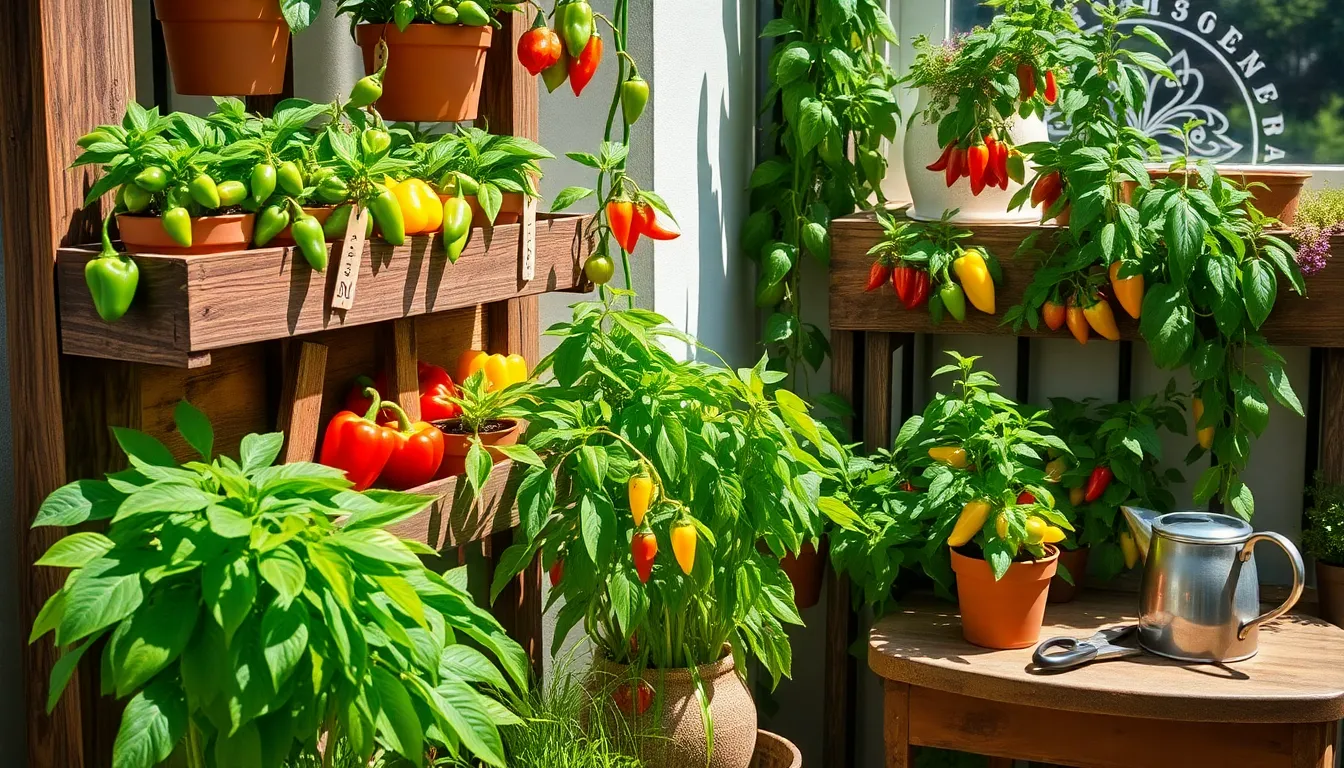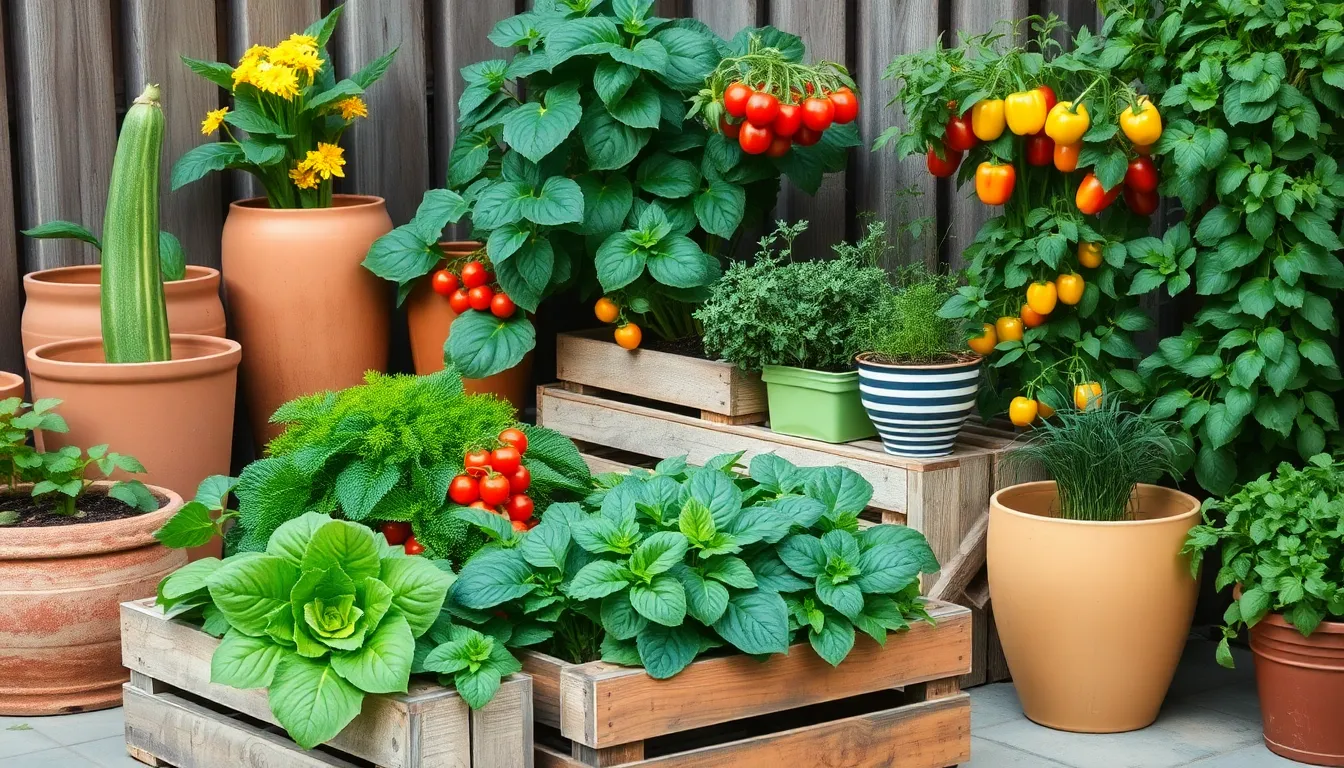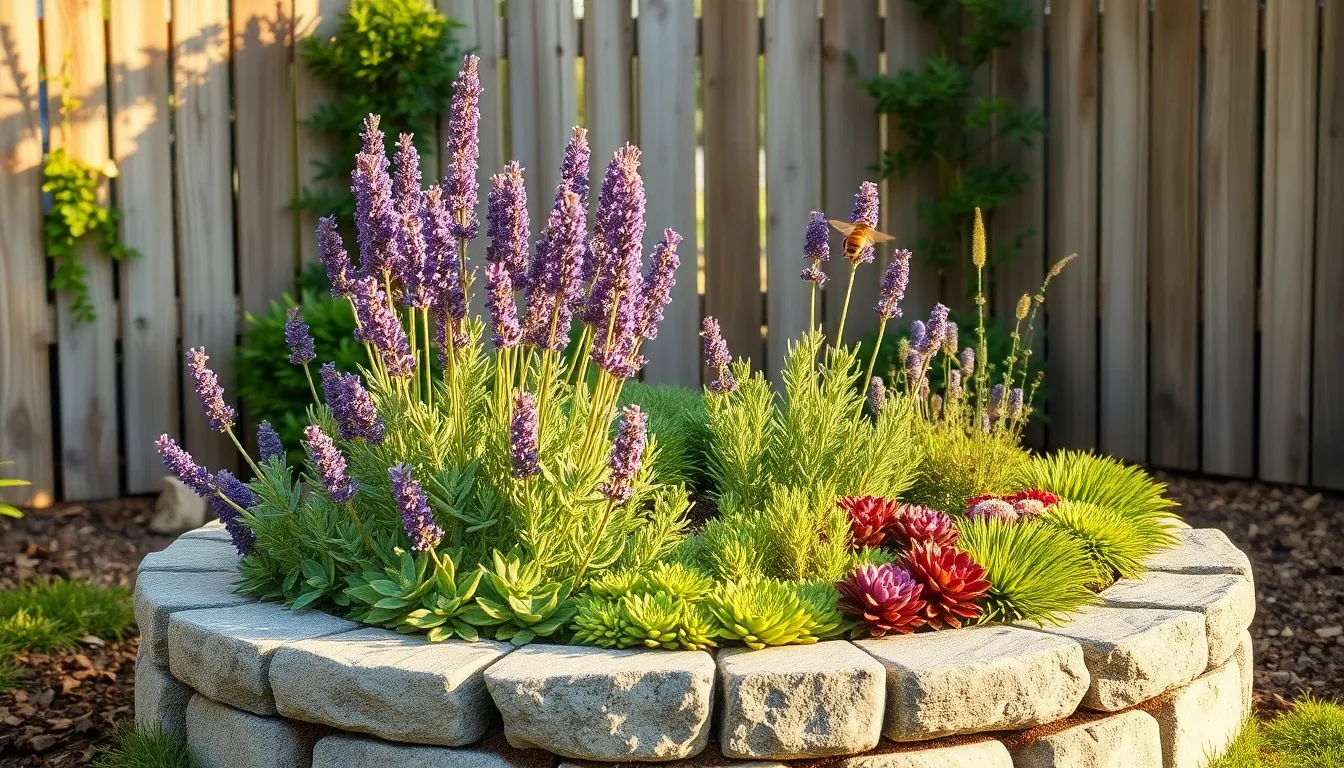Welcome to the wonderful world of container gardening, where even the smallest of yards can transform into lush, vibrant retreats! Whether you’re just starting out or have been nurturing plants for years, this guide is your ticket to making the most of every square inch of space. Container gardening isn’t just a solution for those with limited land; it’s an art form that allows you to experiment with design and variety, creating a personalized paradise right outside your door.
In this guide, we’re diving into a treasure trove of tips that will inspire and empower you to unleash your creativity and maximize your garden’s potential. From selecting the right containers and plants to innovative design techniques, you’ll discover practical advice that translates into thriving, beautiful gardens. Imagine the satisfaction of seeing your favorite blooms flourish and your vegetables thrive, all within arm’s reach. With these techniques, you’ll not only elevate your garden’s aesthetic appeal but also enjoy the therapeutic benefits of gardening, no matter your experience level.
Choose Compact Plant Varieties
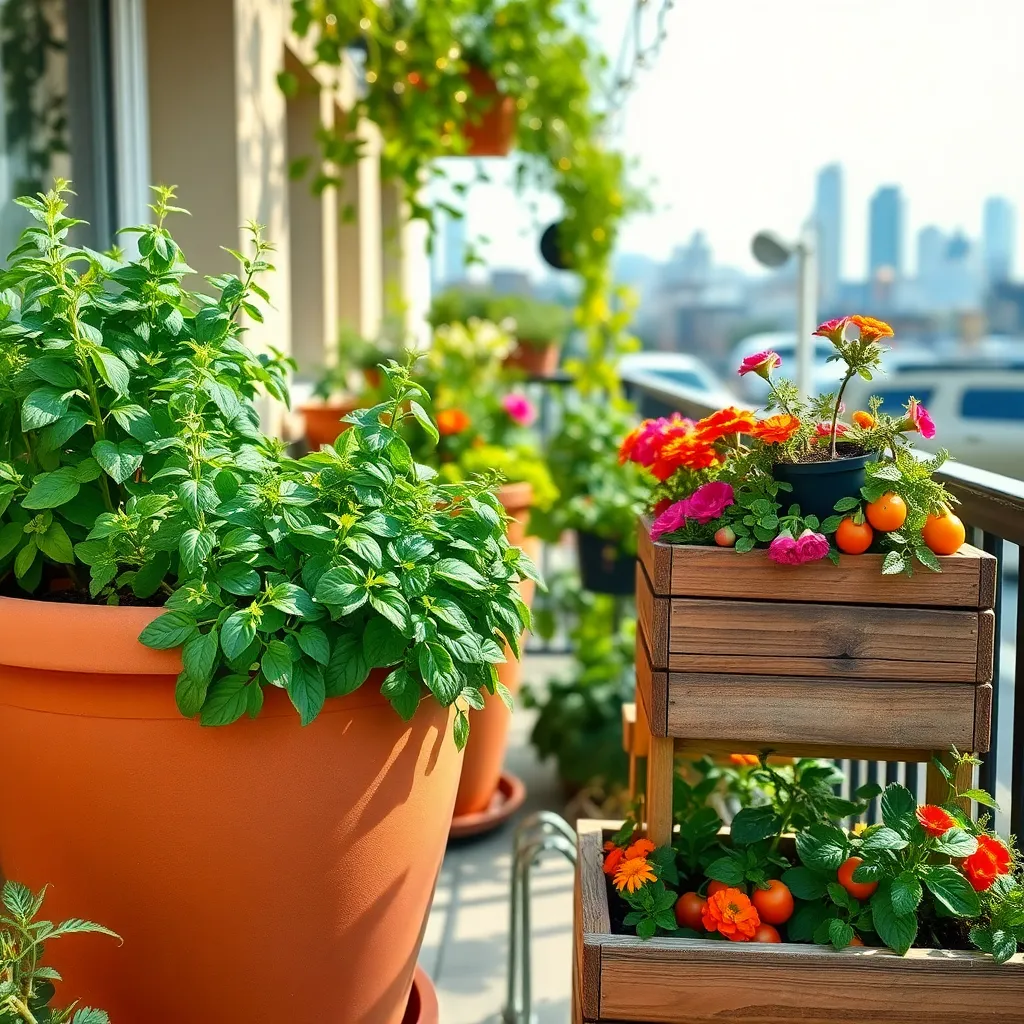
When space is limited, choosing compact plant varieties is crucial for maximizing your container garden’s potential. Opt for dwarf or miniature versions of your favorite plants, which are specifically bred to thrive in smaller environments without sacrificing beauty or productivity.
Consider plants like **dwarf tomatoes**, **basil**, and **miniature roses** that are known for their compact size yet robust growth. These varieties require less space, allowing you to grow a diverse array of plants even if your yard is small.
For successful growth in containers, ensure you use a well-draining potting mix that is rich in organic matter. This type of soil provides the necessary nutrients and prevents waterlogging, which is a common issue in container gardening.
Watering is another critical aspect; compact varieties often have smaller root systems that can dry out faster. It’s essential to water regularly, ensuring the soil remains consistently moist but not soggy, particularly during hot weather.
If you’re looking to experiment, try using **vertical gardening techniques** with compact plants. By training them to grow upwards rather than outwards, you can save even more space and add visual interest to your garden.
Use Lightweight Containers
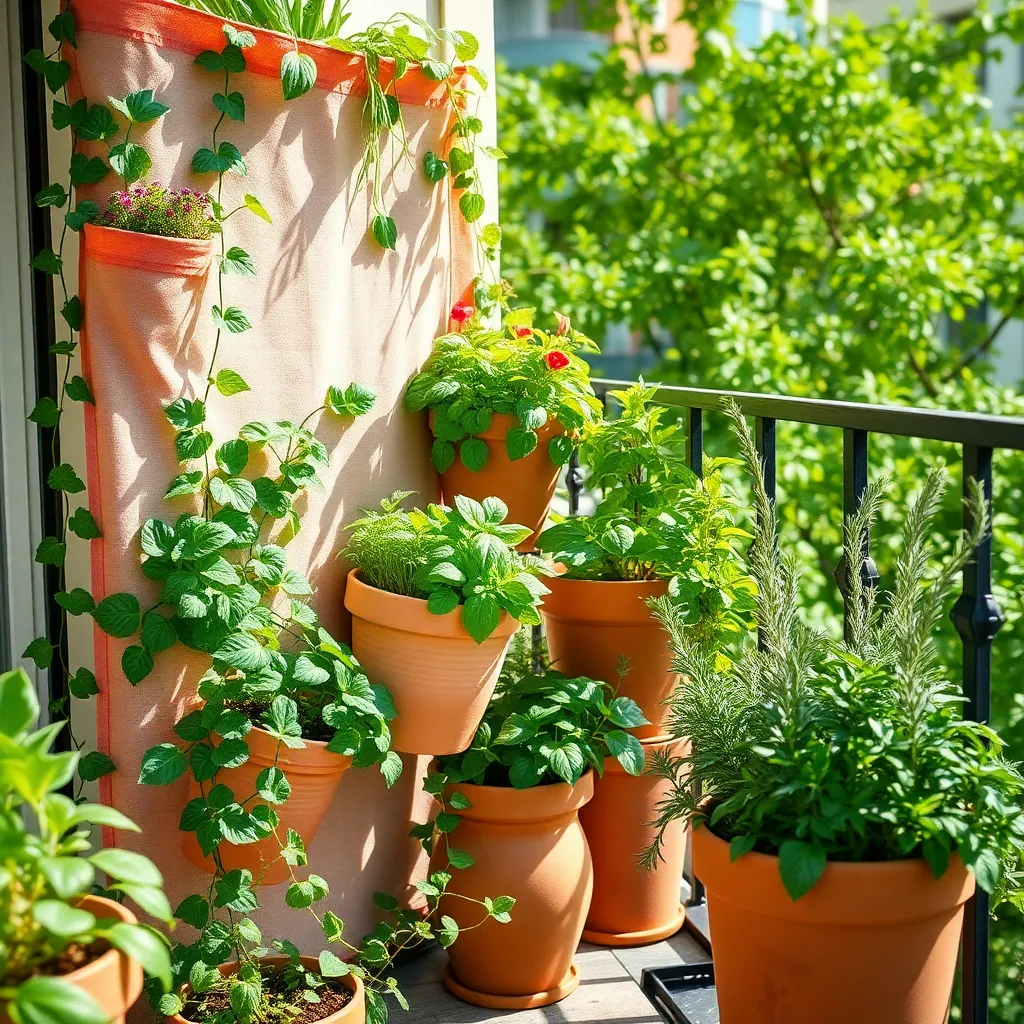
Using lightweight containers in your small yard can make gardening more manageable and enjoyable. These containers are easy to move, allowing you to adjust the position of your plants based on seasonal sunlight changes or weather conditions.
Consider materials like plastic, fiberglass, or foam which are lighter than traditional clay or ceramic pots. Lightweight containers not only ease the physical burden but also reduce the risk of damaging surfaces like balconies or decks.
When selecting a container, ensure it has adequate drainage holes to prevent waterlogging. Proper drainage is crucial for plant health, as it helps avoid root rot and other moisture-related issues.
Fill your containers with a high-quality potting mix rather than garden soil, which can be too dense and heavy. Potting mixes are specifically formulated to be lighter and to retain moisture and nutrients effectively, providing an optimal growing environment.
For those seeking advanced tips, consider adding lightweight materials like perlite or vermiculite to your potting mix. These amendments can further improve drainage and aeration, promoting healthier root systems and more vigorous plant growth.
Arrange for Maximum Sunlight
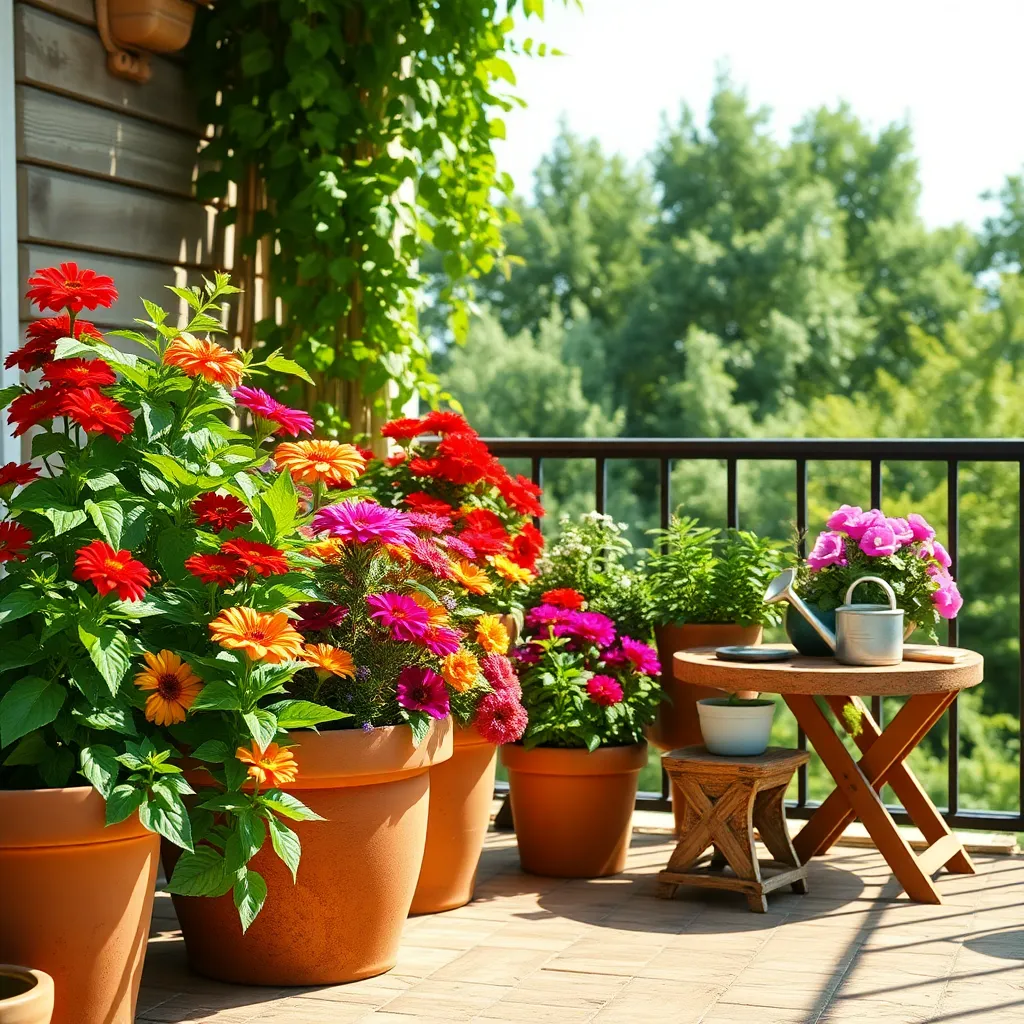
Arranging your containers for maximum sunlight is crucial to the success of your plants. Most vegetables and flowering plants need at least six to eight hours of direct sunlight each day, so consider positioning them in the sunniest spots available.
Begin by observing the path of the sun across your yard throughout the day. This will help you identify areas that receive ample sunlight and allow you to strategically place your containers for optimal exposure.
Consider using plant stands or shelves to elevate your containers, ensuring that each plant gets its fair share of light. This is especially useful in small spaces where ground-level sunlight might be limited by fences or other structures.
For those living in regions with intense sunlight, be mindful of the potential for sunburn on sensitive plants. You can mitigate this by positioning taller plants to cast shade over smaller ones during the hottest parts of the afternoon.
If you’re dealing with limited sunlight due to surrounding buildings or trees, opt for plants that thrive in partial shade. Varieties like lettuces, spinach, and certain herbs can adapt well to less sunny conditions and still produce abundantly.
Advanced gardeners might consider investing in reflective surfaces like mirrors or light-colored walls to amplify available sunlight. This technique can help bounce additional light onto your plants, boosting their growth in otherwise shaded areas.
Incorporate Vertical Plant Stands
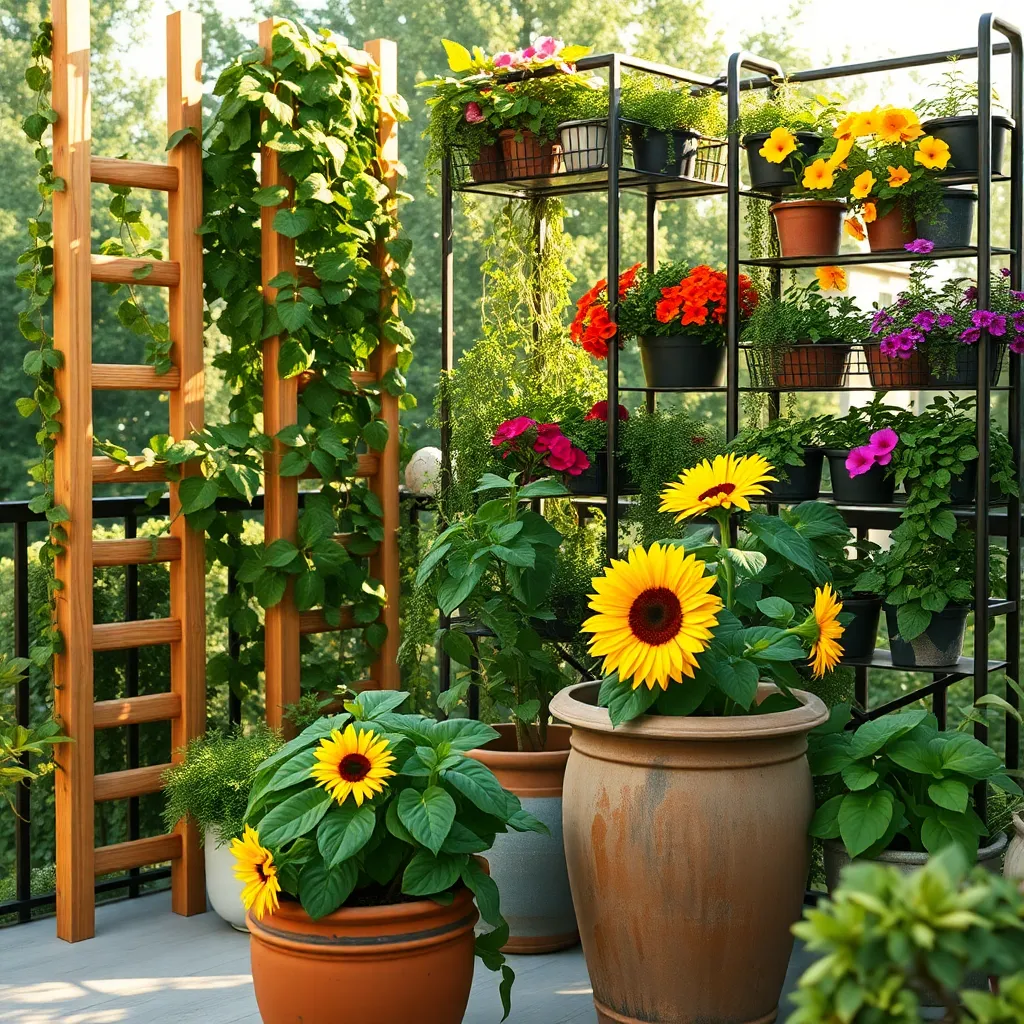
Vertical plant stands can be a game-changer in small yards, allowing you to maximize space efficiently. By elevating your plants, these stands ensure better air circulation and exposure to sunlight, which is essential for healthy growth.
Choose stands made from durable materials like metal or treated wood to withstand outdoor conditions. Opt for adjustable shelves on your stands to accommodate different plant heights and needs, offering flexibility as your garden evolves.
For beginners, start with easy-to-grow plants like herbs or succulents on your vertical stands, as they require minimal maintenance. Ensure that each level of the stand receives adequate watering by using a drip irrigation system or self-watering pots.
Advanced gardeners can experiment with companion planting on vertical stands, combining plants that benefit each other, such as tomatoes and basil. This not only saves space but can also improve plant health and yield by optimizing growing conditions.
Regularly Rotate Your Containers
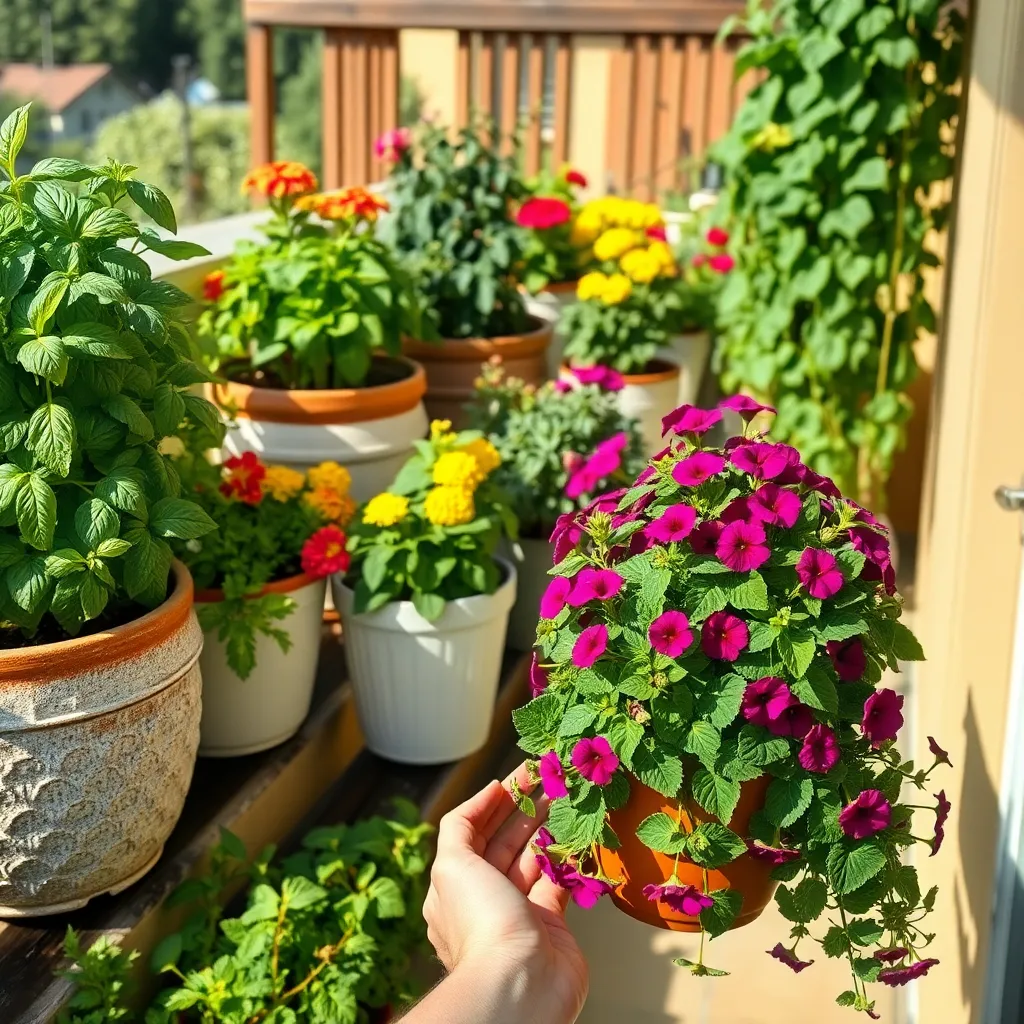
Rotating your containers regularly can significantly enhance the health of your plants by ensuring even sun exposure and minimizing disease risk. This practice is especially beneficial in small yards where sunlight may vary across different areas throughout the day.
To start, aim to rotate your containers every two weeks. This simple action allows different sides of the plant to receive adequate sunlight, promoting balanced growth and preventing plants from leaning towards the light source.
For advanced gardeners, consider the plant’s specific light needs when rotating. Plants like tomatoes and peppers thrive on plenty of sunlight, so adjust their position to maximize exposure, especially if they’re part of a mixed container arrangement.
Additionally, rotating containers helps prevent soil compaction and encourages root health. When you move pots, it also provides an opportunity to check for pests or diseases, allowing for prompt action if issues are found.
Conclusion: Growing Success with These Plants
In the journey of cultivating a thriving relationship, much like a flourishing container garden in a small yard, attention and care are essential. We’ve explored five pivotal concepts: effective communication as the soil of understanding, mutual respect as the nourishing sunlight, shared goals as the seeds of growth, adaptability as the water that nurtures, and quality time as the space where roots deepen. These elements work in harmony to ensure that relationships, no matter the size of their foundation, can bloom beautifully.
As your actionable next step, choose one of these concepts to focus on this week. Perhaps it’s setting aside dedicated time to truly listen to your partner or revisiting shared goals that need nurturing. By taking this step, you’ll be actively tending to your relationship’s growth.
Remember, successful relationships are built over time, much like a garden that flourishes with consistent care. Bookmark this article now to revisit these tips whenever you need guidance. As you continue to invest in your relationship, know that your commitment today plants the seeds for tomorrow’s success. Embrace the journey, and watch as your relationship thrives in its own unique way.

